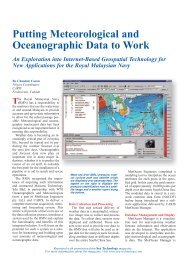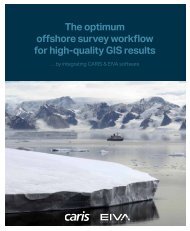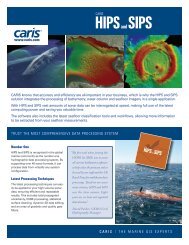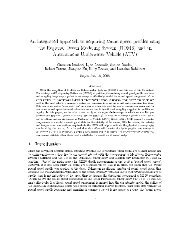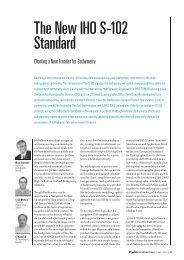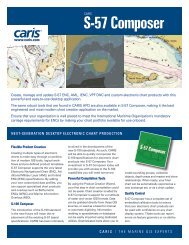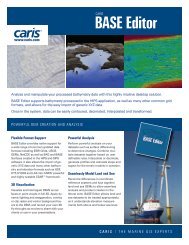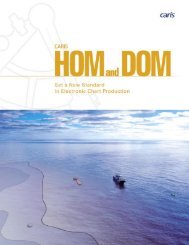Tuning the CARIS implementation of CUBE for Patagonian Waters.pdf
Tuning the CARIS implementation of CUBE for Patagonian Waters.pdf
Tuning the CARIS implementation of CUBE for Patagonian Waters.pdf
You also want an ePaper? Increase the reach of your titles
YUMPU automatically turns print PDFs into web optimized ePapers that Google loves.
4.2.1 Filters contained in <strong>CARIS</strong> HIPS and SIPS 6.1.<br />
HIPS contains two specialized tools designed as bathymetric data filters called<br />
Swath and TPE. <strong>CUBE</strong>, although not a filter, has been adopted by HIPS to use <strong>the</strong><br />
surface derived from <strong>the</strong> point-wise estimates <strong>of</strong> depth that <strong>CUBE</strong> generates, to select<br />
soundings that are judged consistent with this surface, and <strong>the</strong>reby flag all o<strong>the</strong>r<br />
soundings as “not <strong>for</strong> use”. This is, however, an added behavior that is entirely dependent<br />
on <strong>the</strong> <strong>implementation</strong> s<strong>of</strong>tware <strong>for</strong> <strong>the</strong> basic <strong>CUBE</strong> algorithm.<br />
An important feature in HIPS filtering is that none <strong>of</strong> <strong>the</strong> “rejected” soundings are<br />
eliminated, just are flagged as rejected. There<strong>for</strong>e <strong>the</strong> operator can go back and re-do <strong>the</strong><br />
cleaning with new parameters, or merely recover <strong>the</strong>se filtered soundings.<br />
4.2.1.1 Swath Filter.<br />
Multibeam bathymetric data can be affected by several errors that make <strong>the</strong> beams<br />
(and associated depth) less reliable. The effects <strong>of</strong> water column stratification and vessel<br />
motion misalignment are mainly seen in <strong>the</strong> outer beams. An operator may have to take a<br />
lot <strong>of</strong> time to clean <strong>the</strong>se data, which are essentially corrupted through <strong>the</strong> entire surveyed<br />
area. The Swath filter has <strong>the</strong> advantage <strong>of</strong> being able to reject this type <strong>of</strong> outlier<br />
automatically. To run <strong>the</strong> filter <strong>the</strong> operator must have previous knowledge (normally<br />
attached to <strong>the</strong> data) <strong>of</strong> <strong>the</strong> area surveyed and <strong>the</strong> sonar, to set up <strong>the</strong> filter’s parameter<br />
fields; thus <strong>the</strong> bathymetric data is automatically cleaned (rejecting those soundings<br />
which fall outside <strong>the</strong> parameters selected). The parameters <strong>for</strong> filtering are: minimum<br />
and maximum depth, beam-to-beam slope, across track distance, nadir (angles and<br />
distance), quality values set by <strong>the</strong> sonar and missing neighbors.<br />
35



